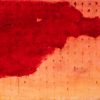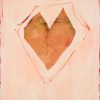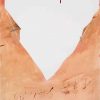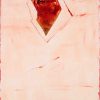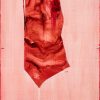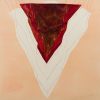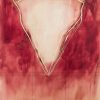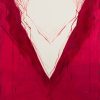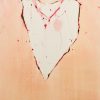2018-2021
The Figure of the Soldier: A heavily nihilistic expression of the de-figurated Last Man, depleted of any potentials of figuration or feasible creativity.
I,draws much of my inspiration from two poems on soldiers– one by the English poet Gerard Manley Hopkins (1888) and the other by the American Modernist poet Wallace Stevens (1944) – to create a different series of work.
Now the surface of canvas becomes a bricolage of the remains of my previous canvases, which had all been painted in crimson red, and lumps of meat and blood clots to represent a schema of the dismembered body of the soldier. These images are to represent a piece of flesh torn out of the hero’s body, recalling the warrior’s humanly death that according to the contemporary French philosopher Alain Badieou marks The Figure of the Soldier.
In these paintings the soldier’s body is signified by wounds and death, whence comes the soldier as an intermediator between life and death.
As we read in a poem titled “Esthetique Du Mal” by Wallace Stevens:
Esthetique du Mal
How red the rose that is soldier’s wounds
The wounds of many soldiers, the wounds of all
The soldiers that have fallen, red in blood
The soldier of time grown deathless in great size
A mountain in which no ease is ever found,
Unless indifference to deeper death
Is ease, stands in the dark, a shadow’s hill
And there the soldier of time has deathless rest.
Concentric circles of shadows, motionless,
of their own part, yet moving on the wind,
Form mystical convolutions in the sleep
Of time’s red soldier desyhless on his bed.
The shadows of his fellow ring him round
In the high night, the summer breathes for them
It’s fragance, a heavy somnolence, and for him,
For the soldier of time, it breathes a summer sleep,
In which his wound is good because life was.
No part of him was ever part of death.
A woman smoothes her forehead with her hand
And the soldier of time lies calm beneath that stroke
— by Wallace Stevens
